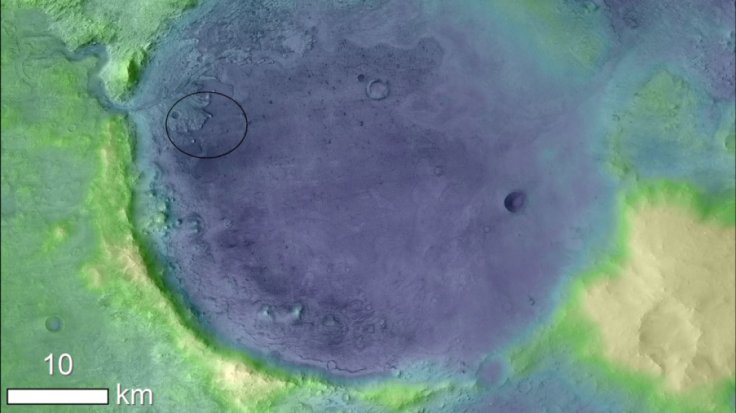
Everyone is waiting excitedly for the landing of NASA's Mars 2020 rover in Jezero Crater on February 18, 2020. The rover has already found the best place to search for indications of ancient life in Jezero, or the site of a lake more than 3.5 billion years ago.
Some residual deposits of minerals, or carbonates within the internal rim of Jezero have been found. The carbonates comprise structures that could live through a fossil form for billions of years. These forms might include seashells, coral and some stromatolites, kinds of rocks that were composed on Mars due to ancient microbial life on the shorelines. These were areas that had lots of water and sunlight. The findings have been published in the journal Icarus.
Even as the stromatolite-like structures exist on Mars, they are the reason why the carbonates trace Jezero's shoreline like a ring, and are concentrated here. They make the region look like an important scientific spot.
Mars 2020 is the next mission that NASA will undertake. It would stress on astrobiology, or study of life. The team hopes that it would be able to work with some novel scientific instruments so that it can build up on various findings from NASA's Curiosity Rover. Scientists will study some core rock samples to check for microbial life possibly deposited in metal tubes on Mars.
Carbonates are also expected to give more insight into the manner in which Mars changed from being a watery planet with a thick atmosphere to becoming a freezing desert. Carbonate minerals were formed when carbon dioxide and water interacted and showed some subtle changes. These are the time capsules that would give some inkling of when and how Mars started to dry out.
Jezero Crater, which is 28 miles or 45 kilometers wide, once had an old river delta. The "arms" of this delta is clear in images taken by satellite missions like NASA's Mars Reconnaissance Orbiter from space. Some colourful mineral maps were created by the orbiter's Compact Reconnaissance Imaging Spectrometer for Mars instrument, or CRISM.
Team members belonging to NASA's Mars 2020 mission and the European Space Agency-Roscosmos ExoMars mission are currently exploring how they can explore research techniques in the Australian Outback, before they take off to Mars in 2020. "Stromatolites," which are the most ancient fossilized life forms on Earth are present in Pilbara, North West Australia. Scientists hope to trace similar life forms in Mars after their mission.
"CRISM spotted carbonates here years ago, but we only recently noticed how concentrated they are right where a lakeshore would be," said the paper's lead author, Briony Horgan of Purdue University in West Lafayette, Indiana. "We're going to encounter carbonate deposits in many locations throughout the mission, but the bathtub ring will be one of the most exciting places to visit."
Through their mission, the team is hoping that they can explore the floor of the crater as well as the delta, when the rover takes off. Horgan adds that the team is hoping that it would come to the rim of the crater as well as its carbonates.
"The possibility that the 'marginal carbonates' formed in the lake environment was one of the most exciting features that led us to our Jezero landing site. Carbonate chemistry on an ancient lakeshore is a fantastic recipe for preserving records of ancient life and climate," said Mars 2020 Deputy Project Scientist Ken Williford of NASA's Jet Propulsion Laboratory in Pasadena, California. JPL leads the 2020 mission. "We're eager to get to the surface and discover how these carbonates formed."
The team is also setting its sights on some rich deposits of hydrated silica on the verge of the river delta, according to a study published in Geophysical Research Letters. This mineral too shows signs of preserving ancient life.









